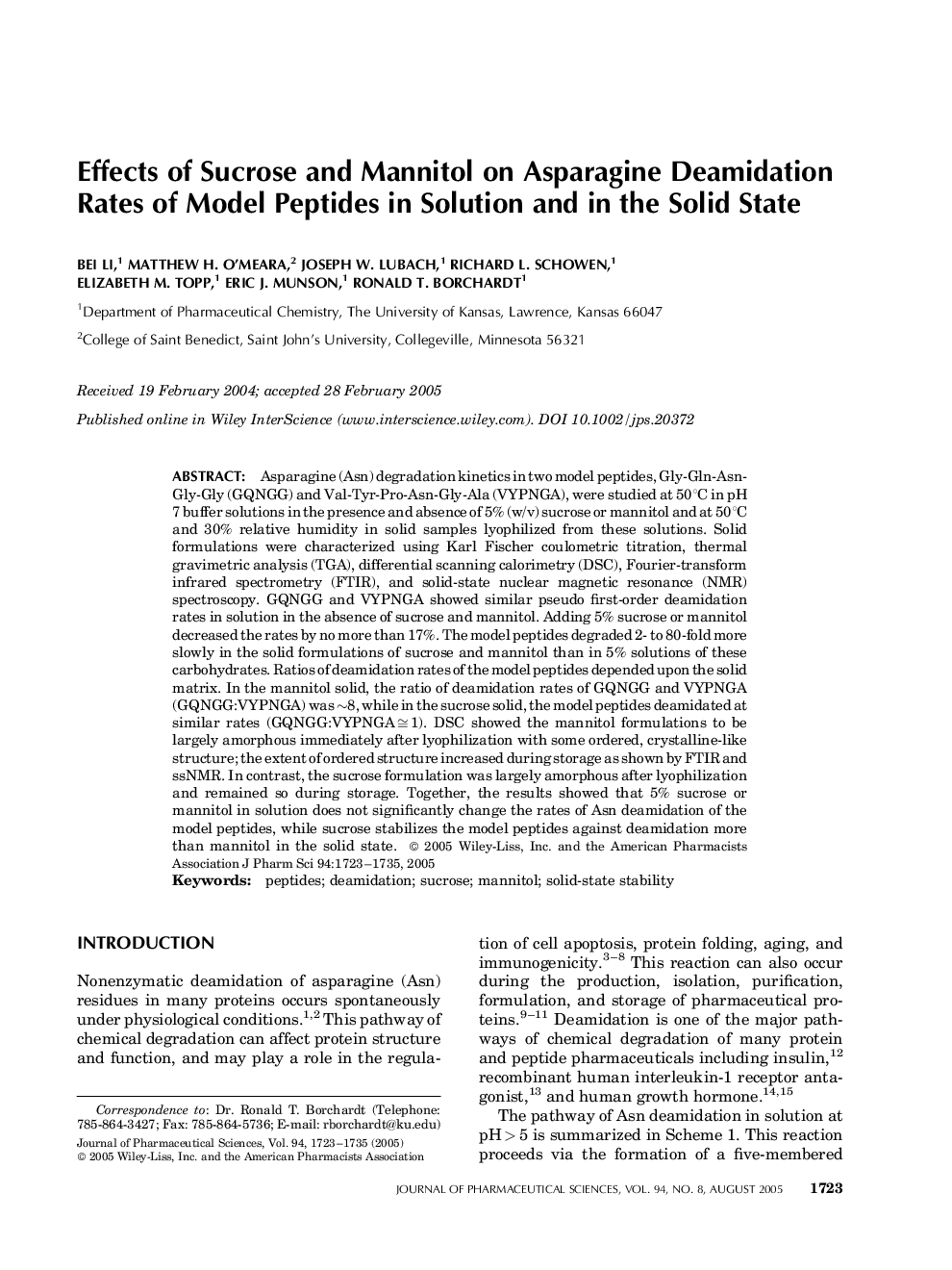| Article ID | Journal | Published Year | Pages | File Type |
|---|---|---|---|---|
| 8994806 | Journal of Pharmaceutical Sciences | 2005 | 13 Pages |
Abstract
Asparagine (Asn) degradation kinetics in two model peptides, Gly-Gln-Asn-Gly-Gly (GQNGG) and Val-Tyr-Pro-Asn-Gly-Ala (VYPNGA), were studied at 50°C in pH 7 buffer solutions in the presence and absence of 5% (w/v) sucrose or mannitol and at 50°C and 30% relative humidity in solid samples lyophilized from these solutions. Solid formulations were characterized using Karl Fischer coulometric titration, thermal gravimetric analysis (TGA), differential scanning calorimetry (DSC), Fourier-transform infrared spectrometry (FTIR), and solid-state nuclear magnetic resonance (NMR) spectroscopy. GQNGG and VYPNGA showed similar pseudo first-order deamidation rates in solution in the absence of sucrose and mannitol. Adding 5% sucrose or mannitol decreased the rates by no more than 17%. The model peptides degraded 2- to 80-fold more slowly in the solid formulations of sucrose and mannitol than in 5% solutions of these carbohydrates. Ratios of deamidation rates of the model peptides depended upon the solid matrix. In the mannitol solid, the ratio of deamidation rates of GQNGG and VYPNGA (GQNGG:VYPNGA) was â¼8, while in the sucrose solid, the model peptides deamidated at similar rates (GQNGG:VYPNGA â
 1). DSC showed the mannitol formulations to be largely amorphous immediately after lyophilization with some ordered, crystalline-like structure; the extent of ordered structure increased during storage as shown by FTIR and ssNMR. In contrast, the sucrose formulation was largely amorphous after lyophilization and remained so during storage. Together, the results showed that 5% sucrose or mannitol in solution does not significantly change the rates of Asn deamidation of the model peptides, while sucrose stabilizes the model peptides against deamidation more than mannitol in the solid state.
Related Topics
Health Sciences
Pharmacology, Toxicology and Pharmaceutical Science
Drug Discovery
Authors
Bei Li, Matthew H. O'Meara, Joseph W. Lubach, Richard L. Schowen, Elizabeth M. Topp, Eric J. Munson, Ronald T. Borchardt,
